Related Tags
DIY Workshop: Restoring Chris Buck’s house-clearance Stratocaster
Finding a bargain-priced 1962 Stratocaster at a local auction sounds like a fairytale, but this guitar needed a lot of work.

Image: Eleanor Jane
Shortly before Christmas 2019, Buck & Evans guitarist and YouTube sensation Chris Buck sent me a grainy image of an old Stratocaster that was due to be sold at auction the following morning. Unlike musical instrument specialists such as Gardiner Houlgate, house clearances and liquidations tend to be Pontypridd Auctions’ stock in trade, so the details provided were sketchy, to say the least.
“Somebody tagged me in a very pixelated video”, Chris recalls. “I could see this abomination of a Strat leaning up against a cardboard box and they just scanned over it really quickly. I’m not a vintage gear aficionado, but I could tell it looked old and clearly had a lot of wear. I was nervous because if I had alerted anyone to this who I didn’t have a particularly close relationship with, they might have beaten me to the punch.”
I offered to go with Chris to check it out, and early the following morning we found ourselves in the Pontypridd Auctions sale room gazing at a truly dilapidated red 1962 Stratocaster. Other items included a fawn AC30 combo that had been converted into a head, along with a pair of vintage Vox speaker cabinets, a Roland Space Echo and a valve WEM Copicat. On balance, everything pointed towards the sad demise of a Shadows fan.

“I thought there was an outside chance I might be one of only a few people who had figured out what this could be”, Chris says. “But at nine o’clock the floodgates opened and there was quite a bit of interest in the guitar. We were ushered into a back room, where the guitar was dismantled for closer inspection as we enjoyed some tea and biscuits.”
On the plus side, the neck finish and headstock decal were untouched, and all the original tuners were still present and correct. The other hardware was vintage too, although 1970s saddles had replaced all the Pat. Pend. originals. The three-way selector switch and two of the original pickups appeared to have survived, but one pickup was a grey-bottomed 1970s unit and a toggle switch had been installed in place of the second tone control.
Although two original potentiometers and knobs remained, the wiring was a mess. Various capacitors were hanging off the selector switch and only three short lengths of the original cloth wire were still present. Most curiously, at some point a hole had been drilled through the body into the spring cavity to fit a potentiometer.

The original mint-green nitrate guard had been hacked out to accommodate three slider switches. Worse still, the body had been modified for the switches and extra wiring – seemingly with a blunt chisel and a lump hammer. The fretboard was in a similarly sorry state, with missing chunks of rosewood, deep divots and a partial fret job. This was going to be a very big project indeed.
Heading outside for a chat, Chris and I agreed that this guitar wasn’t going to be appearing on his YouTube channel later that week after a a simple cleanup, string change and truss-rod tweak. “We spoke about the work that would be needed”, Chris remembers, “and what it’s potential worth might be. I had a ballpark figure in my mind of what I was willing to go up to, and my limit was £2,000.”
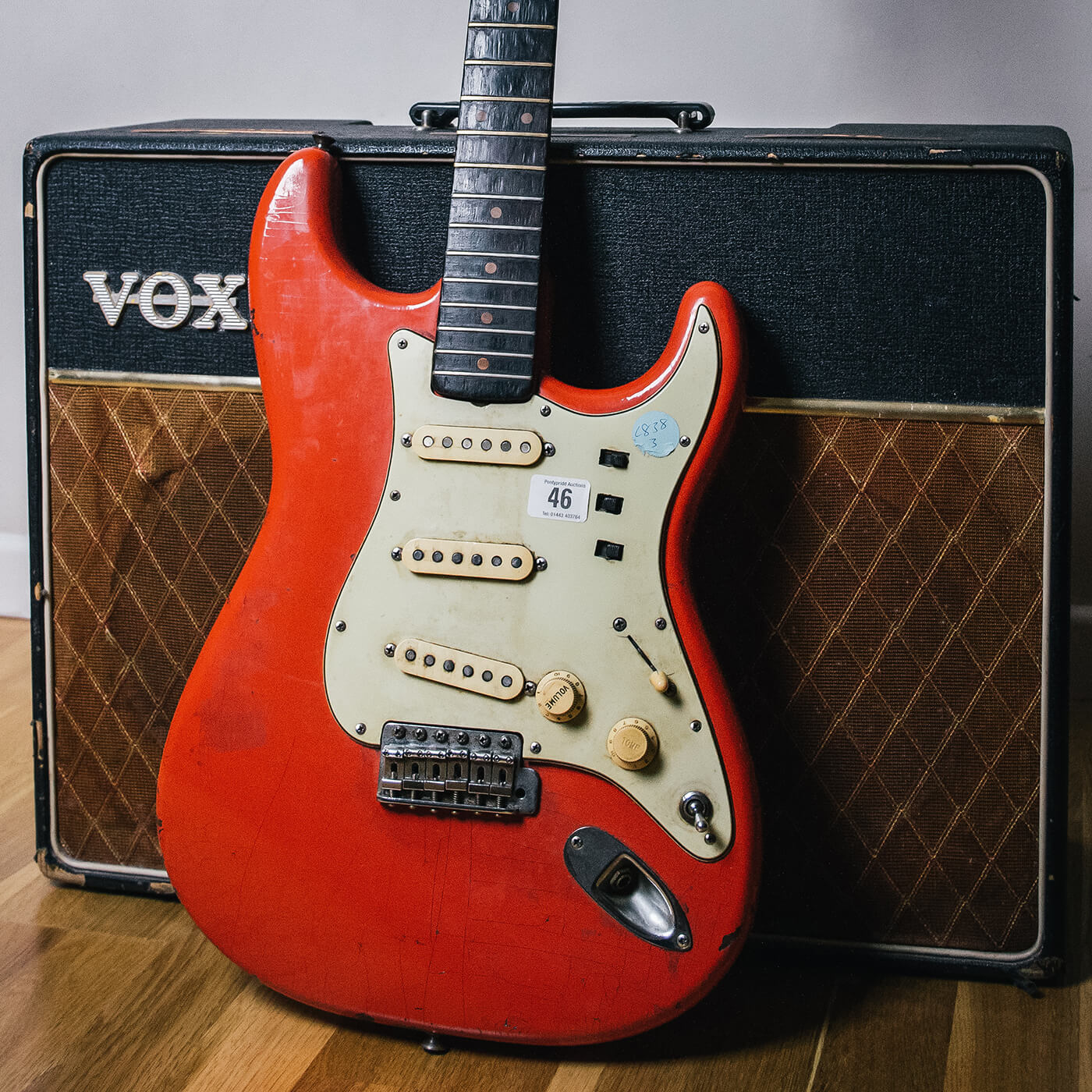
Crunch time
With the Strat earmarked for lot 46, Chris faced a nervous wait. Lot 45 – two sets of plastic shower curtains – achieved an impressive £4.50 and it was game on. Chris describes the moment.
“I’d never bid on anything outside of eBay in my life, so I was frantically sticking my paddle up in the air. Then suddenly it was over and the auctioneer pointed towards me asking for a paddle number. I looked over my shoulder because I thought someone standing behind must have outbid me, but it was mine for £1,950.”
We had no idea if the pickups were working and since the guitar wasn’t even close to being playable, there was no way to tell if it sounded any good. On the plus side, the chunky neck profile felt extremely nice and the overall weight was perfect for an early 60s Strat. The omens were good, but what prompted Chris to take such a big chance?

“The story appealed to the romantic in me. There was this auction house, near enough on my doorstep, with a Strat from the golden era, and I am a Strat guy. Everything seemed to add up on some weird level. Not that I subscribe to that cosmic stuff, but it did feel like it was meant to be.
“I trust your opinion and you explained what was involved and how much the restoration was likely to cost. I also realised that if I didn’t end up liking the guitar, I could sell it and get my money back. Even so, I walked out of the auction shaking a bit.
“When I got it home, there was a temptation to string it up, but for once I exercised some patience and restraint. I didn’t want my first playing experience of the guitar to be anything other than as good as it could possibly be. All I did was plug into a practice amp and tap the pickups to test if they were working.”
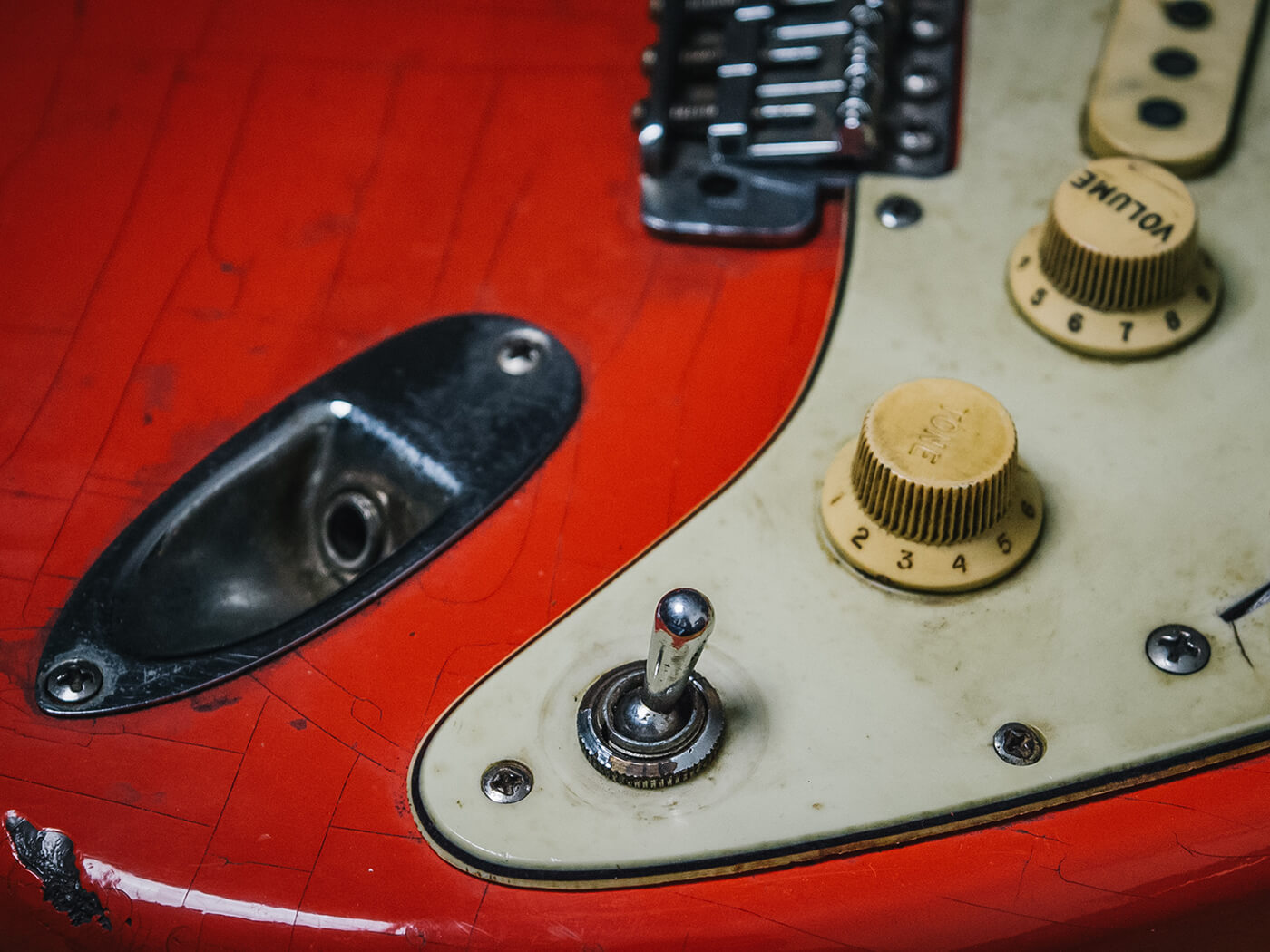
Battle planning
The majority of the vintage Fenders I encountered in the 1980s were stripped or refinished, and many were modified. Most could have benefitted from a thorough clean, too, which is one of the things I find most encouraging about this guitar.
While experts can simulate lacquer checking and wood oxidisation, I have yet to see anybody replicate decades of dirt, caked on grease and dead skin with similarly convincing results. This Strat reeked of authenticity – literally to some extent – and we had to decide how far to take the restoration work.
Although many of the original parts were still fitted to the guitar, this was a player-grade example and no mistake. Chris is a busy professional player and as such, his requirements meant we needed a slightly different approach to the usual restoration fare.
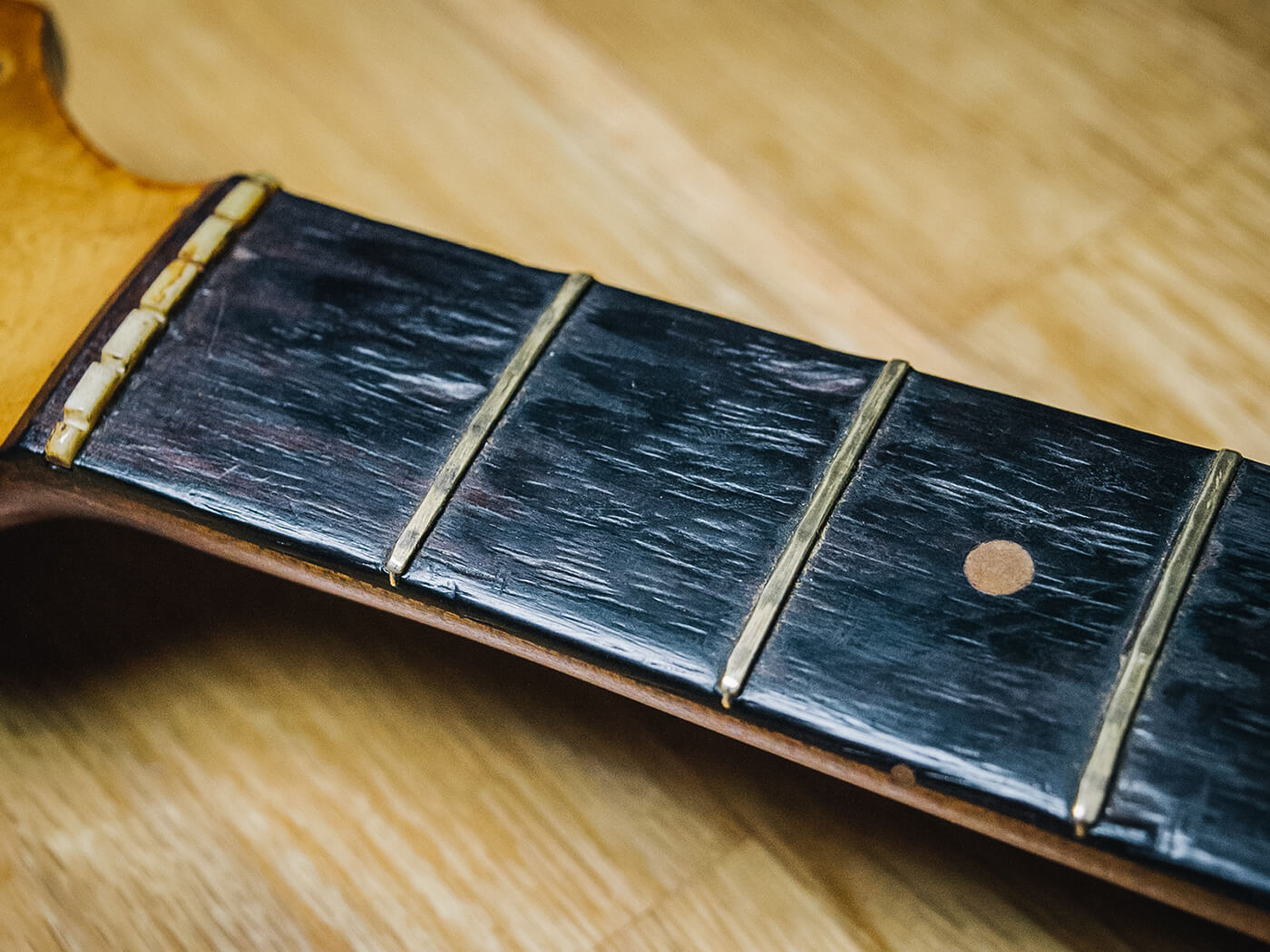
“The fact that it had been altered gave us carte blanche, to a certain degree.” says Chris. “Nothing sacrilegious – but if it’s originality in place of functionality as a guitar you can actually take on tour, there’s no point for me.
“Fitting a five-way switch was a big one because we could have kept the original three-way unit, but I use positions two and four a hell of a lot. The pickguard holes had to be fixed because holes in a guitar that you’re going to take on the road isn’t a great idea.”
Chris doesn’t use tone controls but he rides the volume continually. With just two of the original potentiometers surviving, we decided to keep both as tone controls and install a new volume pot. A replica ceramic tone capacitor was required and all three pickups needed new hookup wires.
Finally, something had to be done about the saddles. Vintage Stratocaster saddles tend to be costly and rusty, so we decided on a set of reproduction pressed steel parts with vintage correct lettering.
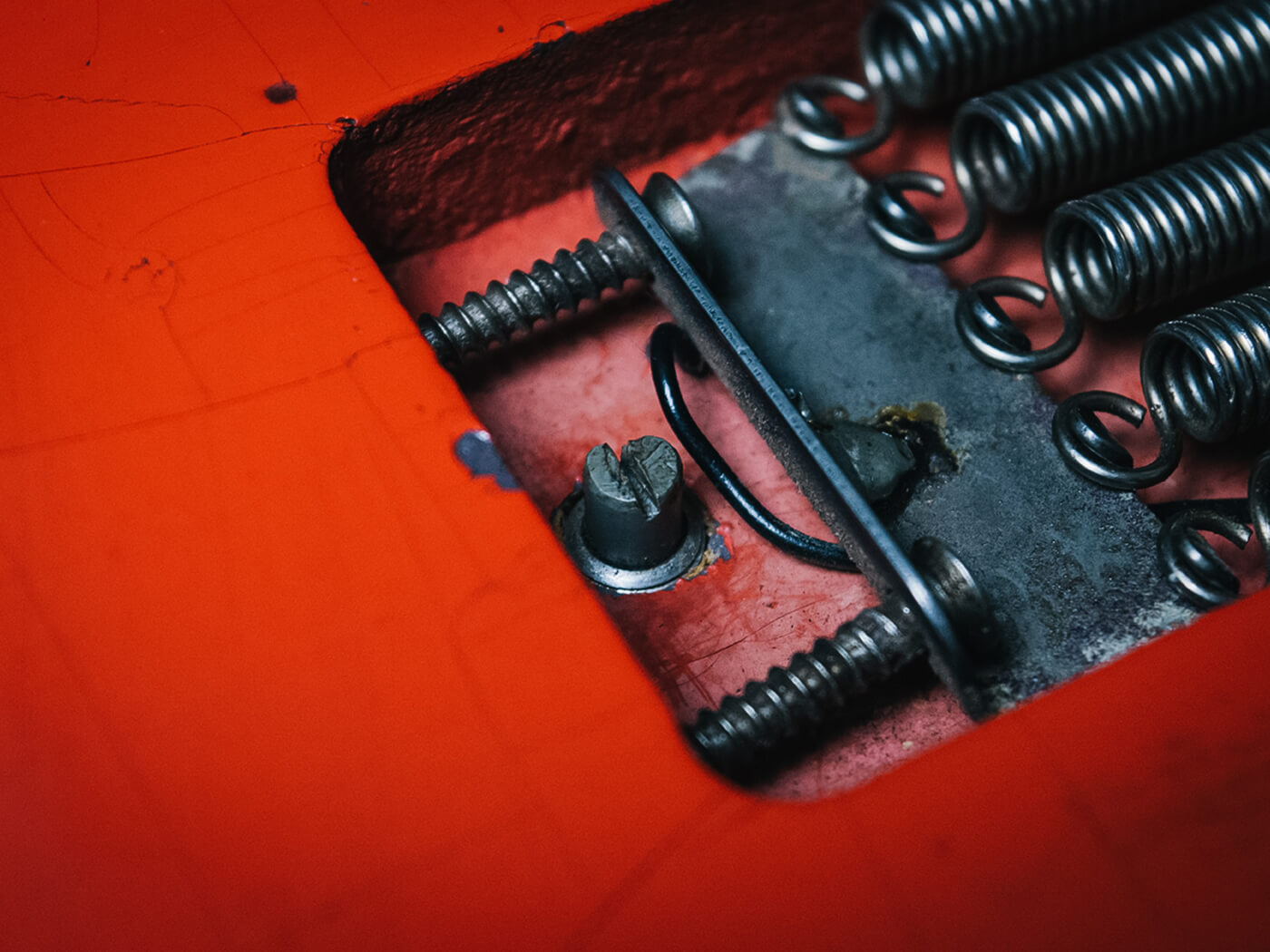
Frets & board
Getting the fretboard back into an acceptable condition and readying it for new frets was the toughest and most fundamental challenge of this project. The issues included deep wear spots between many of the frets, a sizeable chip at the third fret, several deep divots, and a thick coat of milky varnish. Then there was the issue of mismatched frets.
From fret 14 onwards, the frets were factory originals. All the others, however, had been replaced with wide, flat and low brass frets. The brass frets almost fell out, but the Fender frets were reluctant to let go. The third fret slot was particularly concerning because it was excessively wide and packed with flaky glue.
There are aesthetic and practical issues involved with levelling vintage fretboards. Although they may develop divots and low spots in the ‘high traffic’ areas, the smooth surface and dark look of well-maintained vintage Brazilian rosewood fingerboards can make them look and feel amazing. For many, it’s integral to the vintage guitar experience and ‘over restoration’ in this area can detract from the charm and the value of a vintage piece.
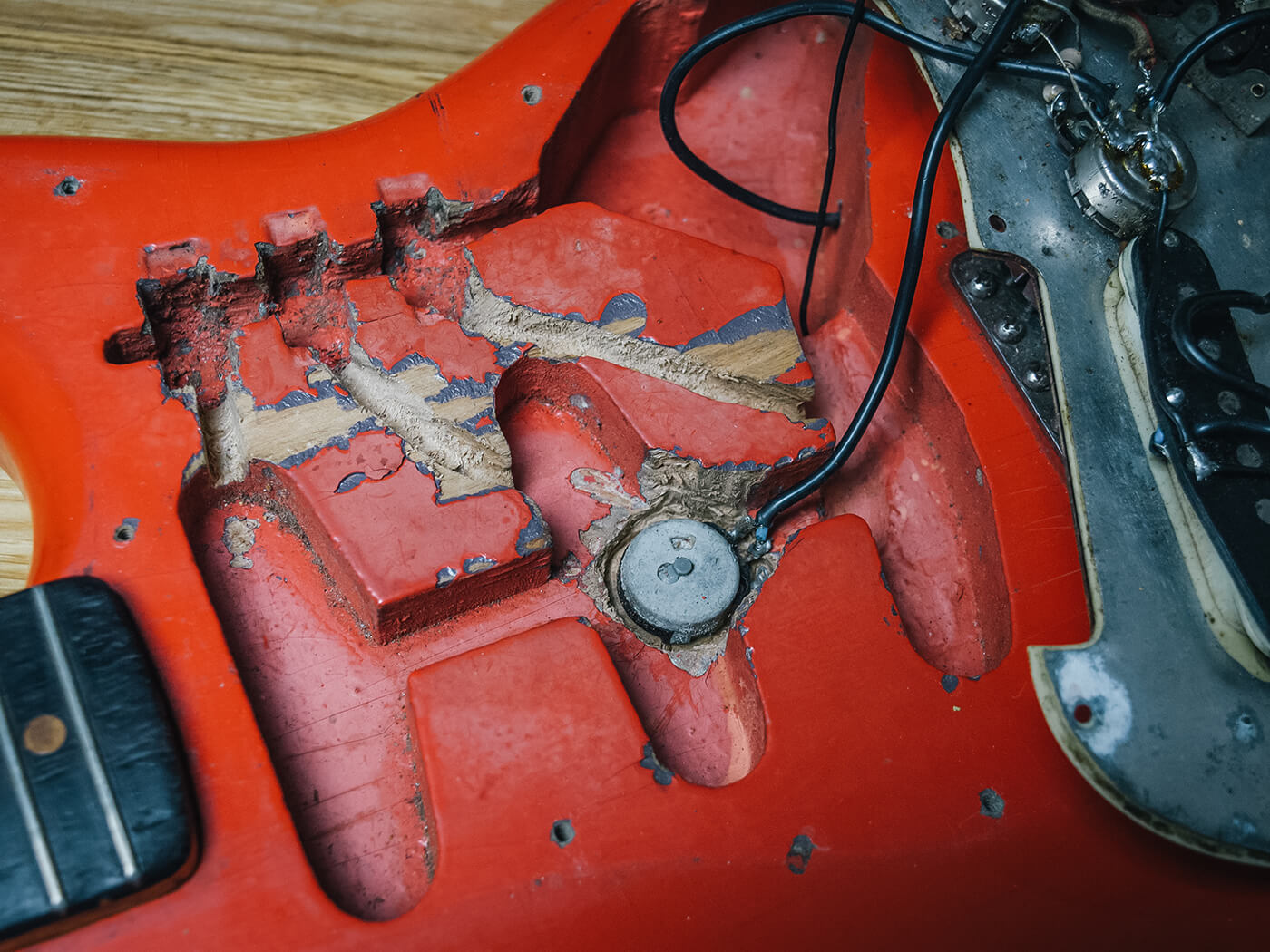
On the practical side, all the Super Glue reinforced chips had to be levelled off and I needed to remove the varnish. My goal was to ensure that the frets went in level, the guitar played perfectly, and the fingerboard ended up looking like nothing untoward had ever happened.
Some of the worn areas between the frets were so low, they almost resembled scallops and couldn’t be sanded out without drastically reducing the thickness of the veneer ’board. This was never an option as far as I was concerned, and I had no intention of daubing the fretboard with paint stripper to remove the varnish.
Instead, I filled the worst of the divots with rosewood shavings and Super Glue, and filled the divot at the third fret with a piece of Brazilian rosewood. I also filled the third fret slot with rosewood and re-sawed the slot.
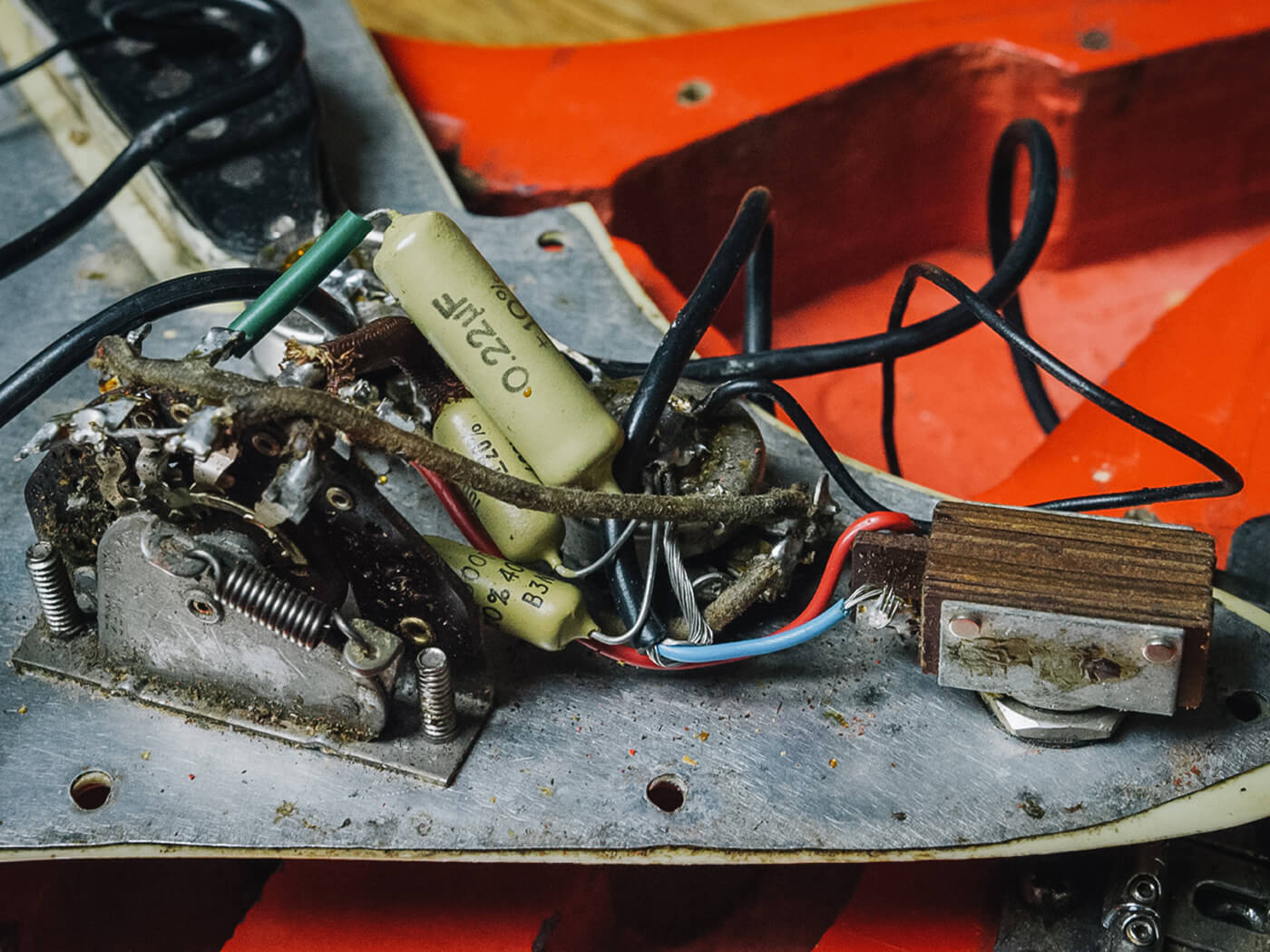
Sanding and fretting
With the fretboard repairs completed, I sanded the ’board using 320-grit paper attached to a 70cm 7.25-inch radius block. I stopped sanding once the repairs were level, because I wasn’t trying to level the entire board – just the tops of the fret slots. Next, l hand-sanded with 800, 1000, 1500 and 2000-grit paper, followed by ever finer grades of Micro-Mesh. The ’board ended up so dark and smooth, it reflected light, but it didn’t look like it had been sanded.
All the slots were scraped and vacuumed to remove all traces of sawdust and old glue, and I ran a fine triangular file across the slots to soften the top edges. I installed the frets, then levelled, crowned and polished them before removing what remained of the varnish using 0000-grade wire wool.
Chris’ choice of vintage-style fretwire for this Strat came from allparts.uk.com (part number LT-0465-000). The tang is just 1.22mm deep, which suits vintage Fender fret slots and is narrow enough to seat securely without forcing the neck into a back bow.
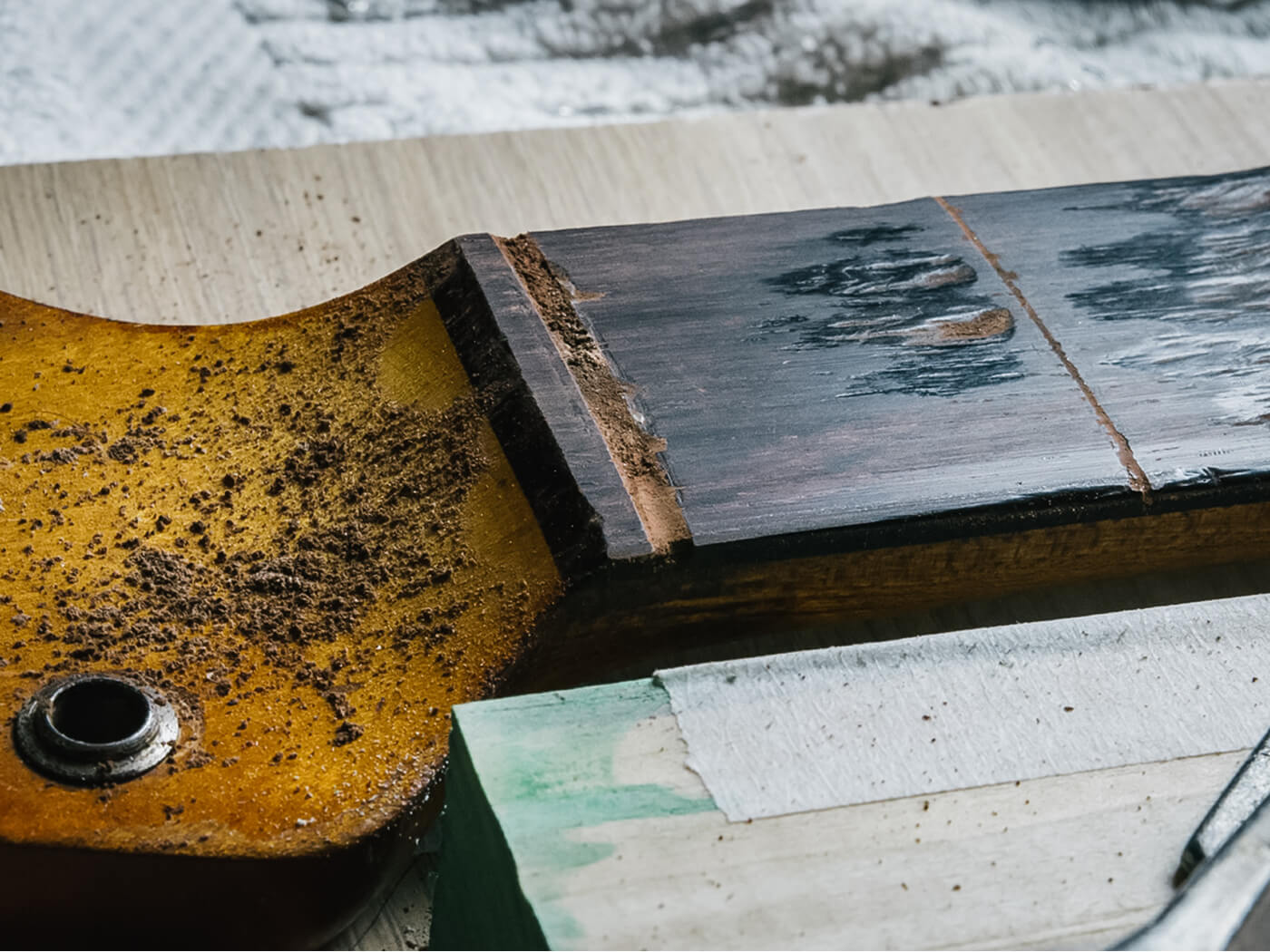
Gruesome klusons
The tuners were extremely stiff and although our initial plan was to replace them with modern repros, I gave them one last chance. After soaking in naphtha for a few hours, they were drained and flushed out with clean naphtha, which was injected with a syringe. A considerable amount of dirt, rust and metal powder was removed.
Once dry, silicone grease was injected into the casings and they began turning freely again. We’d reached an exciting milestone because Chris’ Strat could now be strung up and played for the first time in decades – with the original nut shimmed up on rosewood veneer. Chris recalls this moment clearly.
“All of my research into pre-CBS Strats happened after buying one, because I do tend to leap before I know what I’m going to land on. Getting into the minutiae built a level of expectation, but part of me was reticent about getting too excited, given the state it was in.
“I was out in France at the time but after Huw had cleaned and lubricated the tuners, he messaged to say they were working perfectly and the tuning was rock solid. He also hinted that it sounded a bit special, so I allowed myself to get my hopes up.
“Suffice to say, when I finally got to play it unplugged, it was a memorable experience. The tuning was fantastically stable, it played beautifully and everything just gelled. Even though it didn’t have any electronics in it, that was the first time I allowed myself to get excited.”

On the wire
Dismantling the guitar gave me the opportunity to strip out the modified wiring and assess the pickups and potentiometers. All three pickups showed strong resistance readings, but the original hook-up wires were long gone. I sent the pickups off to House Of Tone, along with some cloth wire I’d relic’d using a combination of stain and soot.
House Of Tone mainman Matthew Bascetta had his work cut out because the magnet wires are literally hanging on by a single thread, having previously been damaged. To his and our great relief, the new wires were safely attached, the original coils survived the process and we could look forward to hearing some vintage Strat pickups in action.
The pots were electronically sound, but they felt stiff and difficult to turn. I cleaned off the solder tags, removed the casings and dismantled them. All the parts were treated with DeoxIT D5 contact cleaner, which cleans and lubricates, before being reassembled. A 250K CTS potentiometer and five-way switch arrived from Allparts, while our repro ceramic cap came from fake58.co.uk. I was all set with the electronics, but first I had some holes to attend to.
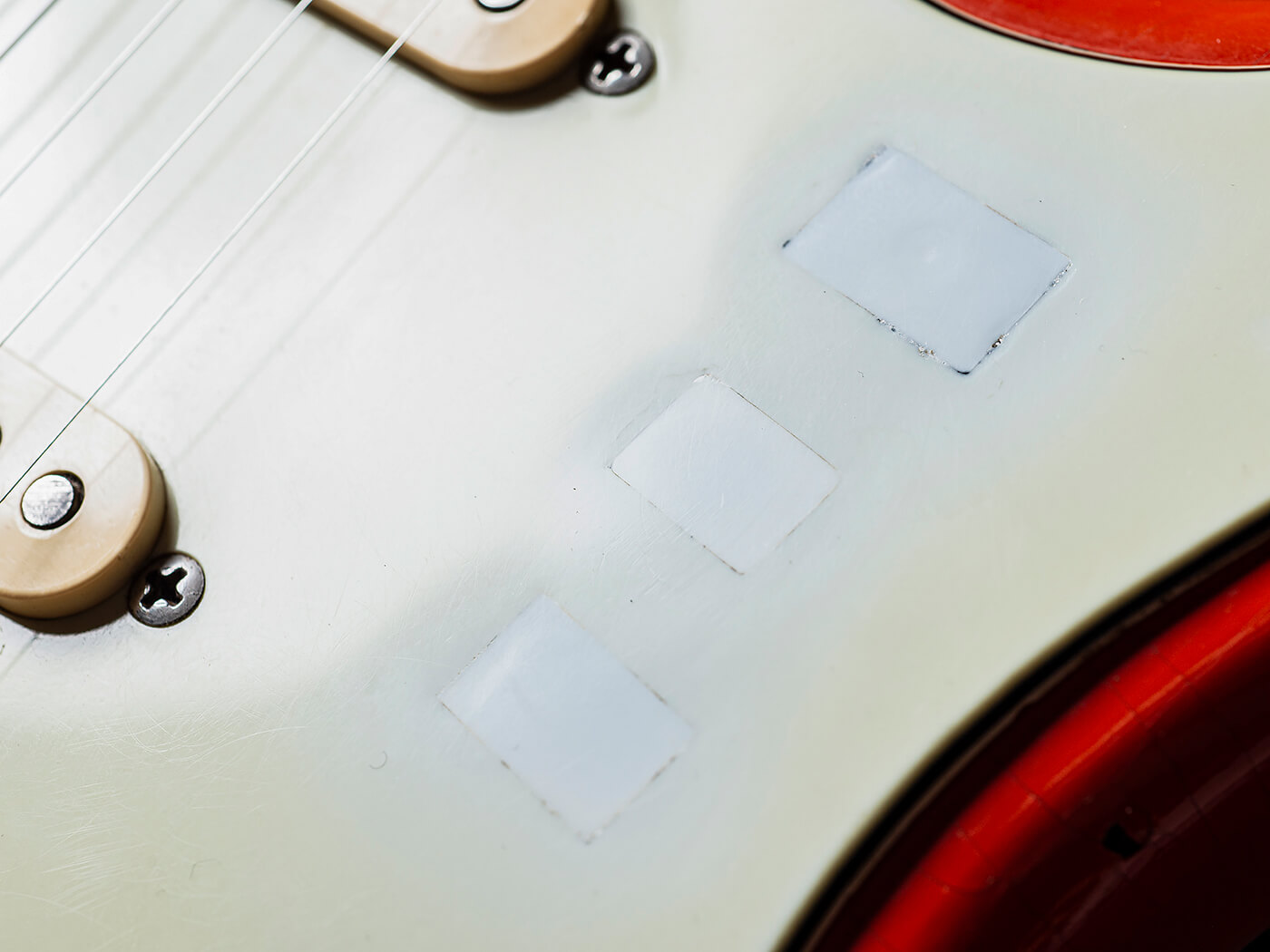
Patching the ‘guard
Having never repaired a celluloid pickguard, I decided to approach it like an inlay job. I cut into the pickguard using a Dremmel router, going just deep enough to clear the black layer but leave the bottom green layer as a ledge. Patches were cut from a spare 1960s Jazzmaster pickguard, trimmed to fit and glued in place using a slurry of green celluloid shavings and acetone.
The patches were then sanded level and polished. Unfortunately, the black layer crept through the slurry and darkened the edges. The repair turned out to be solid but clearly visible, so I was less than pleased. Luckily,Chris felt otherwise, and compared the patches to “scars on an old boxer’s face”.
At last the pickups, pots and switch could be mounted, and I re-used the surviving pieces of vintage cloth wire along with some new cloth wire relic’d to match. A tap test confirmed that everything was working and the pickguard was mounted back onto the guitar.
I made Chris a new bone nut and aged the repro saddles electronically, using salt water and a 12v transformer. I also relic’d a tone knob to complete the set using diluted acetone mixed with ColorTone stain. With the saddles mounted on the bridge, I strung up the guitar and set the truss-rod, action and intonation. The moment of truth had arrived.
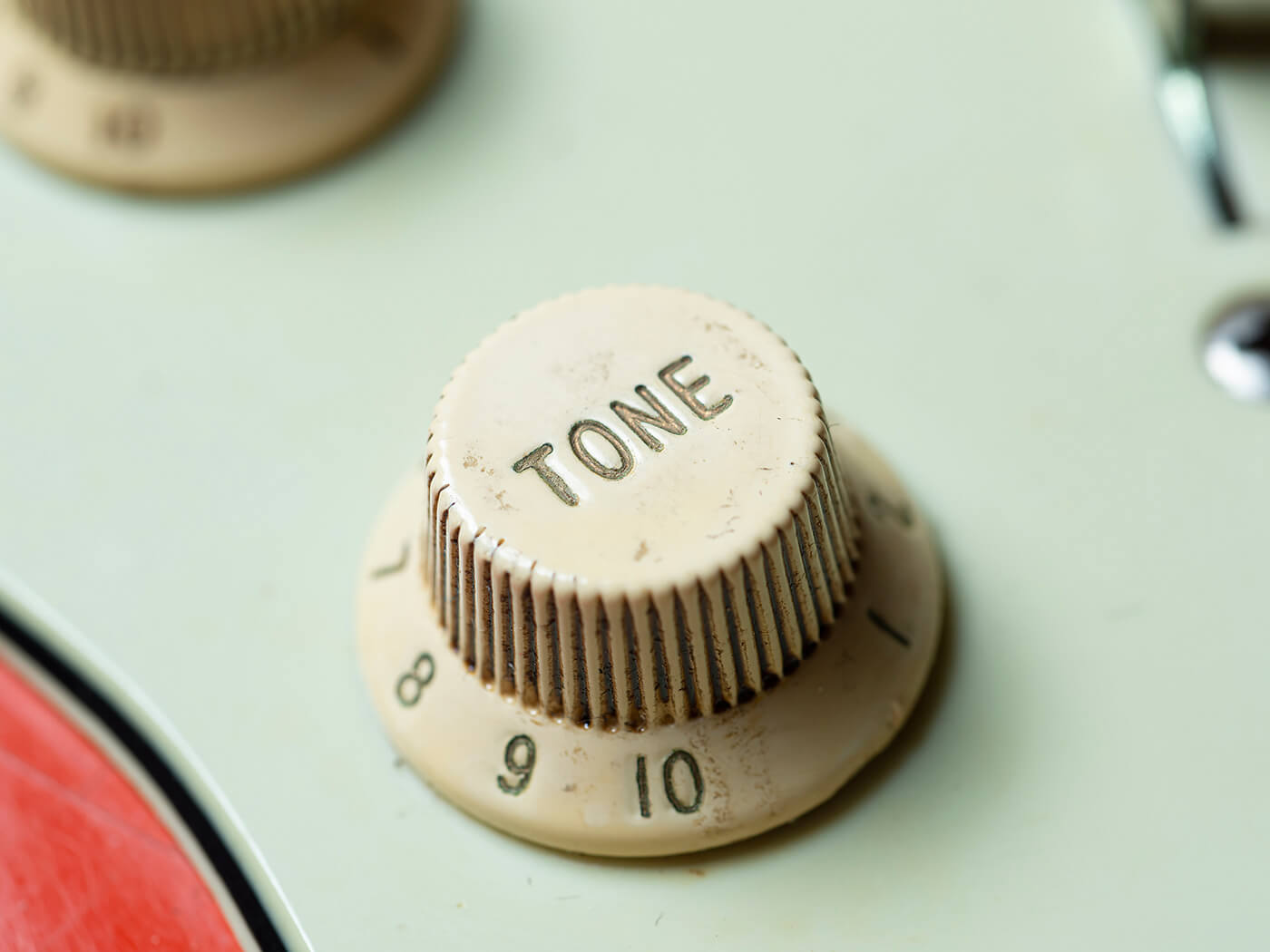
Reunited
On the morning of the auction I’d told Chris that I wasn’t getting a good feeling about the guitar, but his judgement and confidence was proved correct. Listening to him play it for the first time has to be one of my career highlights as a guitar restorer, but the final thoughts about this project should be his.
“I’ve always been pragmatic with gear so one thing that amazed me is suddenly feeling a responsibility to take care of this guitar and treat it respectfully. It has survived intact so long, albeit with some battle scars, and as its new custodian I’m charged with making sure it goes on.
“When the pickups were back in the guitar, finally trying it out was a moment of trepidation. The biggest thing for me is the pickups and how magical they are. If all three original units had been present, I might not have appreciated quite how good they sound. I’m not denigrating the 70s one, but the discrepancy between the pickups makes me appreciate the neck and middle that bit more.
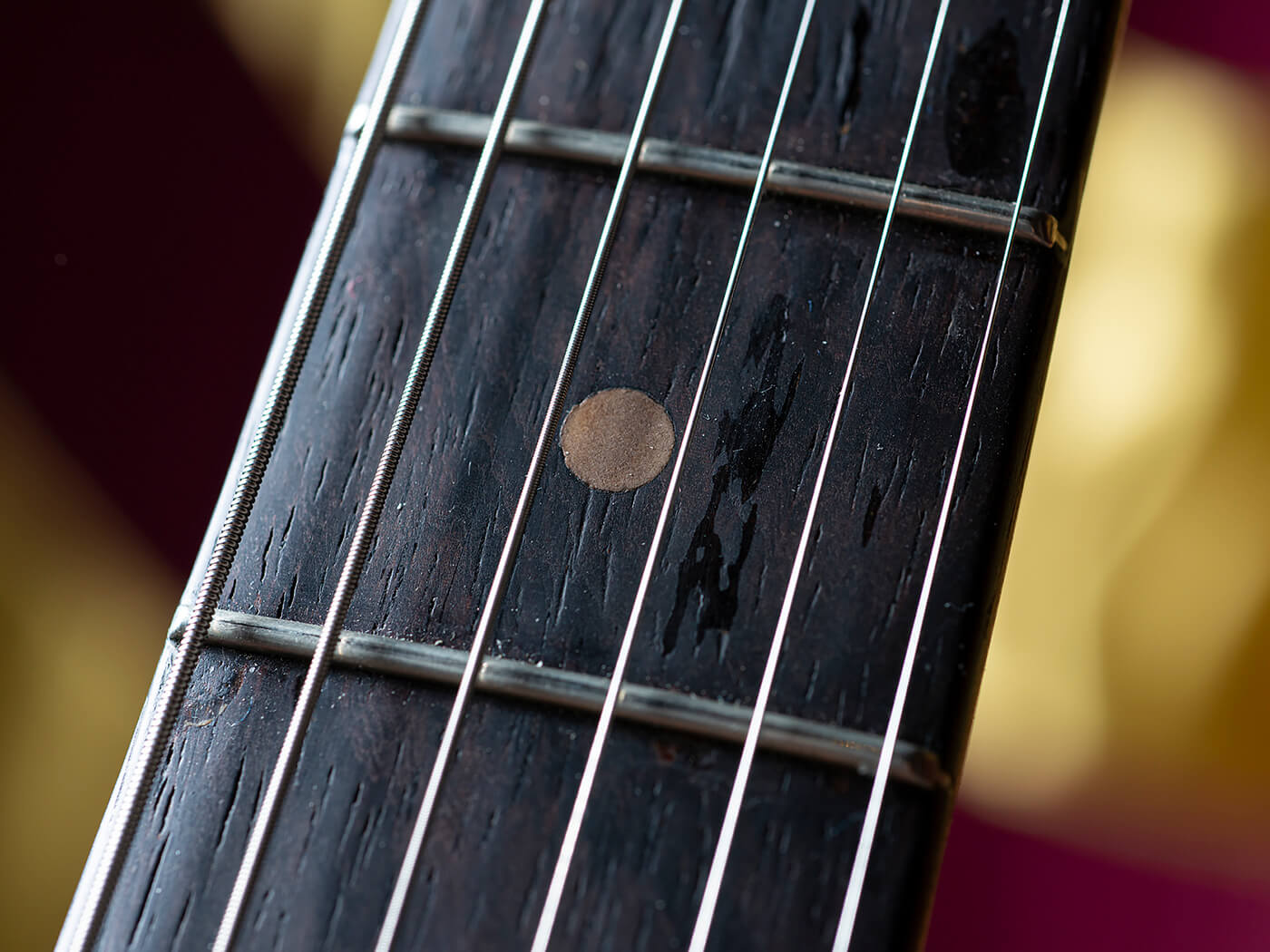
“They have an airiness and a 3D textured nuance that’s particularly nice and sounds fantastic. I like the sound of the 70s one, but if a 1960s pickup did become available, I might put it in the bridge. I’m in no hurry though.
“This was an opportunity to repair and respray the old refinished body, but it looks cool and I still would have wanted it to have the same vibe. I’ve come to love the colour, and it changes in different lights. It can be orangey or like a subdued red, and it was probably the closest ‘Dai The Paint’ had to Fiesta Red back in the 70s.
“Documenting the process on YouTube put extra pressure on my shoulders. It’s easy to forget that this is a holy grail guitar for a lot of people and I was being bombarded with messages asking when it was going to be finished. It also took on a life of its own on Strat forums, with one thread even suggesting my management had planted it there to promote me and it had changed hands for considerably more money than I professed to have paid for it!
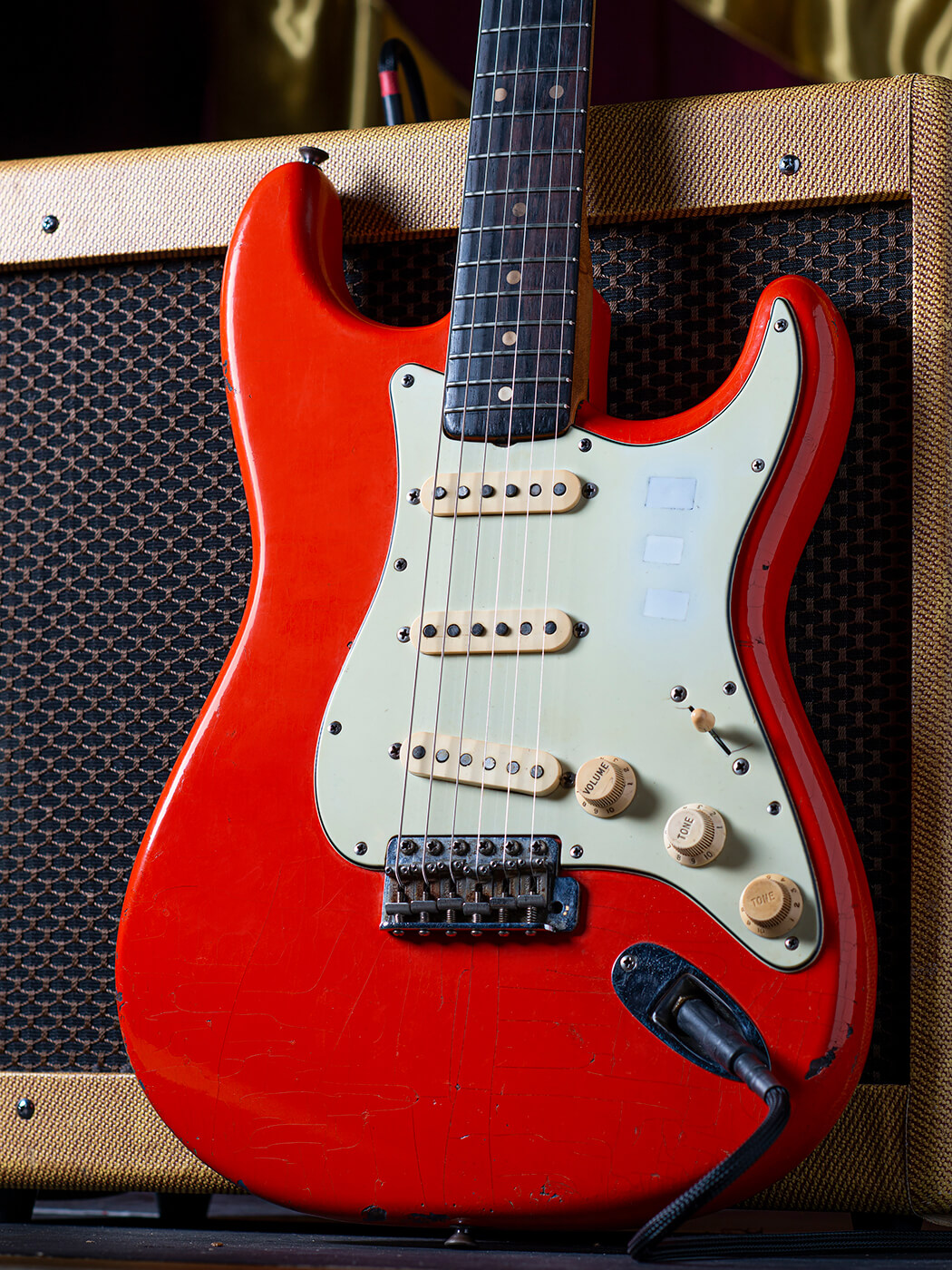
“The main thing about this guitar is that it’s inspiring and makes me want to play more. COVID forced me to play it around the house before I could make some proper noise with my band, and that gave me a chance to get to grips with it. I’ve never spent much time with a 7.25-inch radius board, but I’m getting used to how that affects playability and the way I approach bends. When it finally came to playing with Buck & Evans, it sounded amazing because I was used to the way it plays and already knew how to get the most out of it.
“Some of my ‘best’ guitars aren’t the ones I play the most, because they don’t inspire me to play particularly well. The fact that my old Strat is a bit quirky, has idiosyncrasies and things I have to work around, makes using it as a musical instrument a more pleasurable and complete experience.
“The ’board isn’t over restored, so it feels like an old guitar under my fingers. That makes me more aware of what I’m playing, and I play it differently to other guitars. I’m pleased that because of all the videos and forum chats, it has become ‘that guitar’, and now it has taken on a life of its own beyond me.”
For an in-depth look at the restoration process and demos of the finished instrument head to Tone Twins TV.
